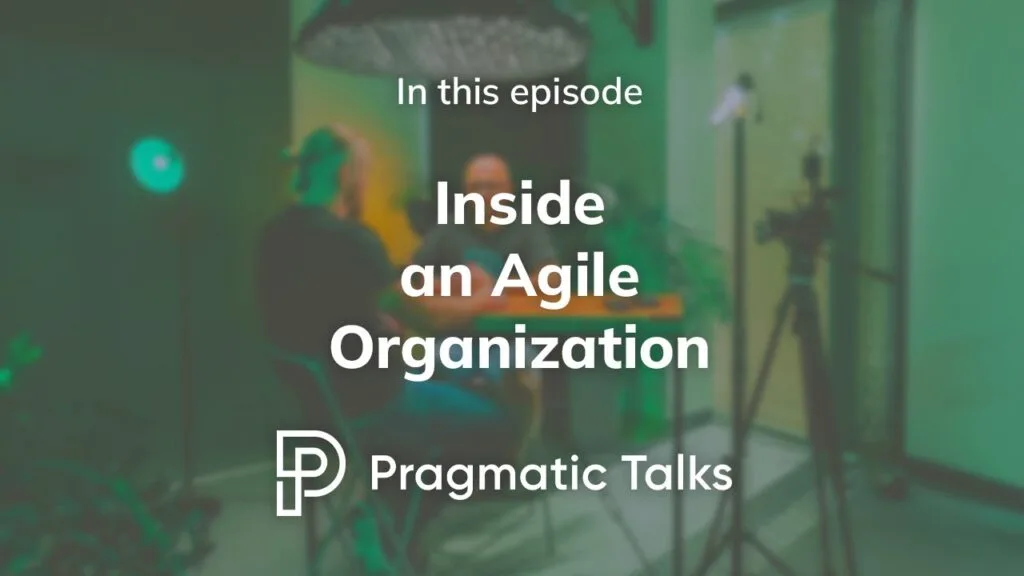How to create a business model for a startup

A lot of startups need help with creating a business model that will be successful and generate money.
Without a sound business model, your company is likely to fail, so it’s essential to make one if you want to succeed.
Our blog post walks you through the process of creating a business model for your startup. We provide tips on identifying your revenue sources, cost structure, and profit models.
So don’t stop—read on!
This is the eighth in a series of blog posts designed to help startup founders better understand and plan the products they build. If you wish to learn more about market research, desk research, and competitor analysis, read our previous posts.
What is a business model? Definition
A business model depicts the essential components of a business or organization that, when combined, will generate profit. It pinpoints revenue sources, cost structure, and profit and growth models that will ensure continued success.
What does a business model look like?
Creating an Excel sheet is the most accessible form of putting all elements of your startup’s business model together.
Business model: what it is and what it is not
A business model is not a business plan.
A business plan is a detailed document of a company’s goals. It’s a broader term because it includes not only a revenue-cost-profit model but also a description of your business, your marketing and sales strategy, product or service description, your management team, and market analysis.
Why is a business model important
Laying out a business model is essential for the further success of your company. Why?
Because it lets you organize your business ideas. A decent business model will help you define how your startup will make money. It will make you better understand the revenue and cost structure.
How to create a business model for your startup
Now that we know the definition, let’s get down to why you clicked this article.
Below I’ll explain what your business model should include. We’ll review the most popular business (revenue) models for startups. Then we’ll discuss multiple revenue streams you can take advantage of and what to consider when creating a cost structure. Lastly, we’ll talk about the profit model (a little bit) and the growth model (a little more).
The right business model requires including a few elements. These are your:
- revenue model,
- total revenue model,
- cost structure,
- profit model,
- growth model.
Stick with me cause I’m sure you want to read about an example of a brilliant dog-walk app, UberPet, that charges professional dog walkers for walking dogs and pet owners for having their dogs walked. A win-win for the one who invented the app, right? 😉
Revenue model
A quick disclaimer #1
The terms “revenue models” and “business models” are used interchangeably in Google. This means that you will be shown the same or similar results if you type in the search bar any of these phrases. It’s incorrect since the term “revenue models” is narrower than “business models,” but the Internet has its rules, and there’s nothing we can do about it. Just remember that there are two phrases you can use when researching the topic.
A quick disclaimer #2
This is super important, so let me bold the information:
There can be different types of users in one product. This means you can have many different business models within one product.
Let’s look at an example of the already mentioned UberPet (a fictional application we’ve created for the use of this article).
UberPet is a mobile app for professional dog walking services. It enables you to find someone to walk your dog when you can’t do it yourself. It’s a marketplace connecting dog owners and professional dog walkers.
This app has two business models: one for dog owners and one for dog walkers.
A. Dog owners pay a certain amount of money for a dog walking service.
B. Dog walkers pay a monthly subscription to be listed on the marketplace.
So, in the first case, that would be the on-demand model (because a service—walking a dog—is provided when a consumer wants it). In the second case, the model would be a subscription.
What are the most popular revenue models (business models) for startups?
There are multiple business models to choose from, but we will discuss only those that have proved to be the most popular among startups. This is a list of revenue models selected by our startup consultant Wojtek.
So what are the best models to generate revenue?
Marketplace model
Online marketplaces are platforms that connect buyers and sellers. We can distinguish horizontal and vertical marketplaces. In horizontal marketplaces, multiple product categories will cater to a broader audience (Amazon). Vertical marketplaces, on the other hand, concentrate on a single, often niche market sector (Etsy – vintage, custom, DIY things).
The marketplace business model is a big one since it includes other popular models:
- Subscription
- Freemium
- Commission
- Listing
- Featured ad
I’ll describe the first three in a second but let me shortly present the last two before.
If you’re a seller in a listing marketplace, you must first pay to be featured on the platform list. You’re paying for being added to a repository.
The featured ad model is often combined with other models, such as commission or listing. In this case, a seller pays extra money to have their product or service listed on the top of a search result.
Subscription model
This revenue model goes back to the 17th century but is booming today.
In the subscription model, customers pay a recurring price at fixed intervals to maintain access to a product or service. Your subscription will automatically renew at the end of each period, and your credit card or checking account will be charged for the new period.
The popularity of this model is justified.
A business’s predictions for revenue become more reliable when subscribers continually pay customers throughout their agreement, so the companies feel more secure.
On the other hand, customers might enjoy being subscribed to a service or product if they think they will buy it frequently, and through subscriptions, they could save money. Also, with the help of subscription services, customers can save time.
Examples: Netflix
Freemium model
The freemium model is a common variation of the subscription business model. It combines free and premium services. A user gets access to a basic (free) product, but money is charged for additional (premium) features or services.
Examples: LinkedIn, Spotify
Commission model
This is one of the most popular revenue models. Here, a (platform) gets a commission from each transaction. A marketplace charges a percentage or fixed fee for its services when the customer pays the supplier.
Example: Uber
Affiliate model
Let’s discuss this business model on the example of Amazon Associates—Amazon’s affiliate marketing program.
The affiliate model in the online world is based on customized affiliate links. In Amazon’s case, if you’re a content creator, publisher, or blogger, you can share products available on Amazon with your audience. You then earn money for each qualifying purchase or customer action (signing up for a free trial program etc.) made through your link.
You’re happy because you get up to 10% off every transaction. The more engaged your audience is, the more you can get. Amazon’s happy because more traffic is generated and more products are sold.
Example: Amazon Associates
One-time payment model
One-time payment is as simple as it sounds. You offer a product the user must pay only once to obtain it.
Total revenue model
Once you have decided on which business models to use, you can move on to define your total revenue model.
To count the total revenue, you must add money obtained from your revenue model and additional revenue streams (peripheral income), that is, the money you get outside your core activities.
Additional revenue channels could be:
- Paid ads (you make money on ads displayed in your app),
- one-time payments inside your app,
- consulting,
- selling digital products,
- affiliates,
- etc.
Cost structure
The next thing you should do is calculate the cost structure. Here you must include fixed and variable costs. Things to incorporate in your cost structure might be:
- product development,
- marketing and sales,
- salaries,
- recruitment,
- maintenance,
- infrastructure (office etc.)
- operating costs,
- management fee,
- customer acquisition cost,
- customer retention cost,
- etc.
Profit model
Now you know your revenue and costs, you can summarize all you know so far. In this step, you subtract your costs from the money earned to see if the initial assumptions about your business actually make sense and if the startup can be profitable.
Growth model
The last step you take is developing your growth model. Create a decent Excel table with predictions for the next 24 months. You want to answer the question: How do I plan to grow my business, and what do I need to make it possible?
Remember that while your revenue grows, your costs will grow as well.
Costs might grow differently than your revenue; sometimes, costs will grow much slower than the revenue (and that’s the perfect scenario).
In your growth model, you need to think very broadly and analyze how each action you take will interact with other factors.
Try to predict how much money you need to invest in acquiring new users monthly. But you can’t stop here! Because these new users will generate new costs, right? Let’s look at an example.
I invest 10,000 USD to generate 1,000 new users over the next 3 months. These 1,000 new users will make my monthly turnover grow by 50,000 USD. However, these 1,000 new users will force me to hire new people for my team. That will cost me 10,000 USD monthly…
…and so it goes.
Useful metrics you must take into consideration when calculating your growth model are:
- Customer acquisition cost (CAC) = how much you spend to acquire new customers. (By the way, we recently published a post on startup customer acquisition in 2022. Check it out!)
- Customer retention cost (CRC) = how much you spend to keep one existing customer buying.
- Customer lifetime value (CLV) = the total income you can expect from a customer over the whole period of your relationship.
- Conversion rate (CR) = the conversion rate of a website is the percentage of visitors that complete a desired goal (a conversion) out of the total number of visitors.
- Monthly recurring revenue (MRR) = the stable and predictable portion of your startup’s revenue for one month.
- Money burn rate = the pace you spend money. It’s usually calculated for one month.
Final thoughts
And that’s it for the business model. Now you have an overview of what a business model is and know the following:
- why you should create one,
- that you can combine multiple revenue models within one product,
- what the most popular business models for startups are,
- what 5 elements your business model should consist of.
Remember that not every business will find the same model successful. Choose those that will let you successfully launch your product and achieve long-term success.
Good luck with creating your business model!







